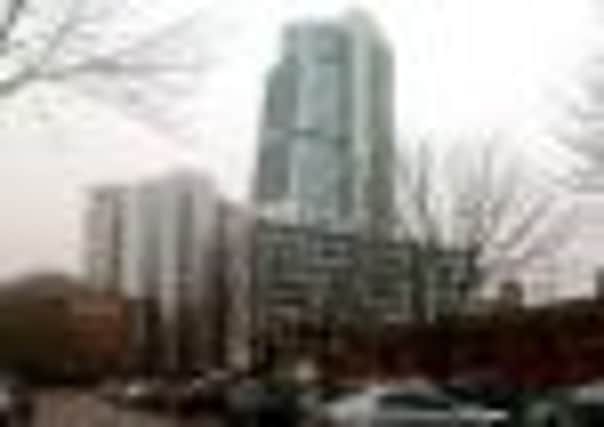Coroner orders manslaughter probe over ‘wind tunnel’ death near Leeds skyscraper


Edward Slaney, 35, from Sowerby Bridge, West Yorkshire, died after being crushed by the truck that was blown off all four wheels in a notoriously windy area near the Bridgewater Place skyscraper on March 10 last year.
The inquest was told the lorry “floated through the air like a hot air balloon” in gale-force winds and landed on him.
Advertisement
Hide AdAdvertisement
Hide AdLeeds Coroner’s court was told that the accident spot had become known for strong winds and that day “freakishly high” speeds of between 67mph and 79mph were recorded at Bridgewater Place.


The coroner was told there had been a number of wind-related incidents near the building, including a policeman being blown off his bike.
After hearing evidence about the design and construction of the building, Coroner Melanie Williamson, said: “I’m concerned having heard all the evidence there may be an offence of corporate manslaughter by one or more of the organisations.
“I’m obliged to adjourn this inquest pending further inquiries by the Crown Prosecution Service,” she added.
Advertisement
Hide AdAdvertisement
Hide AdYesterday, the court heard that people had been complaining to Leeds City Council of a “wind-tunnel effect” at Bridgewater Place since 2008.
Daljit Singh, deputy area planning officer at the council since January 2009, told the inquest that it had taken measures to protect pedestrians by erecting barriers in the area.
But he said he had no knowledge of whether anything had been done to protect high-sided vehicles, such as lorries, from the wind.
Ian Pennock, a lawyer representing Natasha Mahoya, a 22 year-old who was injured in the accident that killed Mr Slaney, read from letters of complaint.
Advertisement
Hide AdAdvertisement
Hide AdOne read: “Bridgewater Place has turned the main street into a massive wind tunnel!”
Another, from March 31 last year, urged the council to “do something about the Bridgewater Place wind-tunnel effect; it has already killed someone this year”.
Mr Pennock asked Mr Singh: “Clearly you (the council) were aware of the problem from at the latest January 2009.
“Why didn’t the council do anything about warning high-sided vehicles as to this wind tunnel?”
Mr Singh responded: “I am not a highways officer.”
Advertisement
Hide AdAdvertisement
Hide AdMr Pennock pressed Mr Singh: “What effects would any reasonable person think that (the wind) would have on any high-sided vehicle?”
Mr Singh responded: “I cannot say it would be a threat to a vehicle. I cannot comment on that. I don’t know whether that was considered by my colleagues or not.”
A micro-climate report containing a wind assessment was commissioned when the building was in planning stages in 2001. After this report, the building was moved two metres in its design and another wind assessment was not carried out until 2008, after it had been built.
When asked whether the initial report was out of date after the plans changed, Mr Singh, said: “I don’t know. That depends on how much the building has moved and the level of the change.”
Advertisement
Hide AdAdvertisement
Hide AdThe driver of the lorry, Paul Bartle, described the incident, saying: “I was doing about 20mph, the next thing I remember is I’m on my side.”
“I floated through the air. It just carried me - it was just like a hot air balloon going up.”